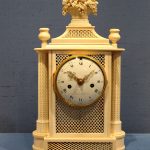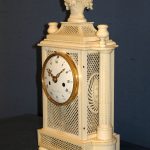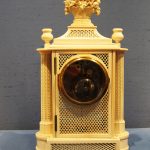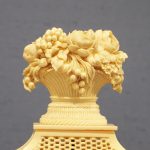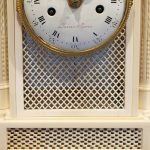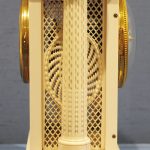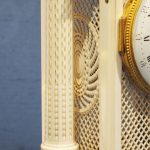A rare and important Louis XVI turned ivory mantel clock
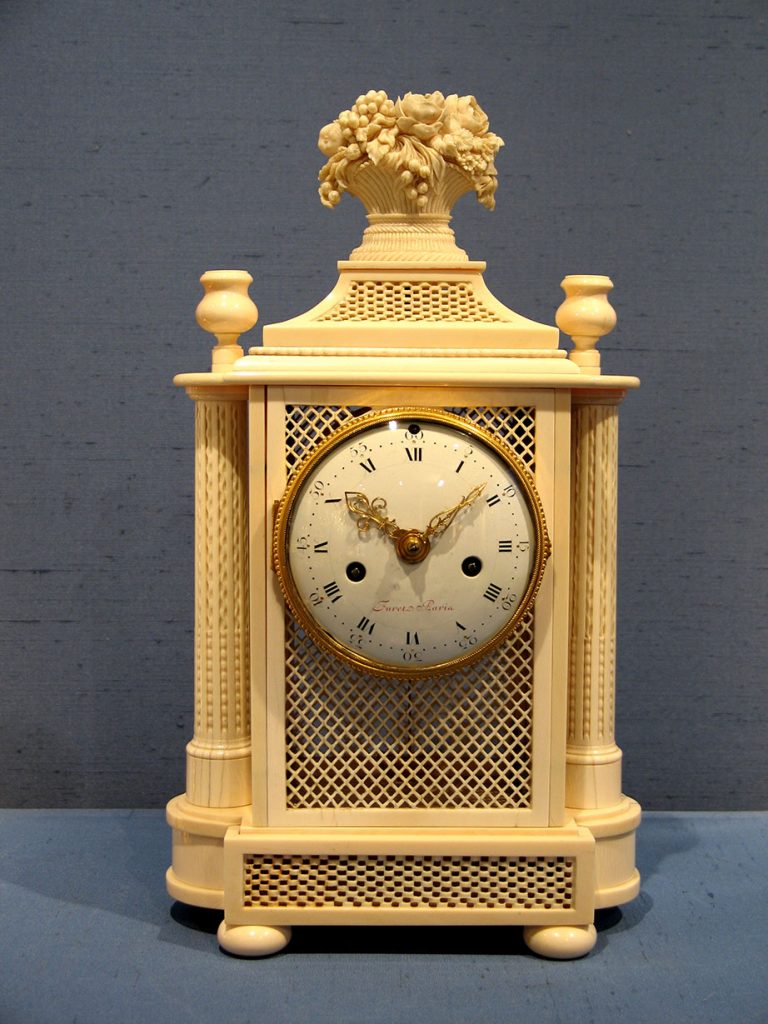
A rare and important Louis XVI gilt bronze-mounted turned ivory mantel clock,
the dial signed Furet à Paris – circa 1780
Height: 31.5 cm. (12 ¼ in.) Width: 18.5 cm. (7 ¼ in.) Depth: 10 cm. (4 in.)
Literature
C.Baulez, ‘Notes sur quelques meubles et objets d’art des appartements intérieurs de Louis XVI et Marie-Antoinette’, in Versailles: deux siècles d’histoire de l’art, Paris: Editions de la Réunion des musées nationaux, 2007, p. 248, fig. 9
Marie-Antoinette, Paris: Editions de la Réunion des musées nationaux, 2008, p. 111, fig. 74
This example is one of only three French 18th century ivory clocks known: the other two – one at Versailles and one in the Hermitage Museum, St. Petersburg – were made for members of the French Royal family. As such, it is an incredibly rare and important discovery.
While this example lacks the gilt bronze decoration present on the other two, they all have exactly the same form and many stylistic elements in common, notably the pierced fretwork of the pediment, door and sides. Decorative elements in gilt bronze on the royal clocks are executed in ivory on this piece.
Precious ivory objects like this clock have always been associated with the Royal family. From the Renaissance onward, ivory-turning was considered an essential part of a princely humanist education.
The clock in the Hermitage was documented as far back as 1793 as having been made by Louis XV as a present for his grand-daughter-in-law, Marie-Antoinette, and the recent Paris exhibition catalogue appears to confirm this. This seems unlikely as stylistically it dates to after 1780, long after Louis XV’s death in 1774. It is more probable that all three originated in the atelier of Michel Voisin (1729-1786), maître de tour du roi (literally ‘master turner of the King’) or his son, François, who delivered a similar pair of carved ivory vases to Marie-Antoinette in 1786. Louis XVI, his brothers and aunts were all avid amateur ivory-turners so it isn’t totally preposterous to think that one of them had a hand in making this clock.
The clock works and dial are associated but are exactly of the same date and sort that one would expect to find on a Royal clock. Jean-Baptiste-André Furet (1720-1807) was one of the top makers of the time who worked for the Court and Royal Household.

